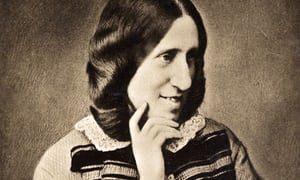
Eliot was “shockingly plain … with a huge nose and missing teeth.” Why, then, did her family fixate on the seemingly insignificant rumor that her right hand was larger than her left, attempting to change and control the narrative about this appendage after her death? In the chapter “George Eliot’s Hand,” Hughes carefully unpacks this persistent story and explains why such a physical disparity was problematic.
An enlarged right hand (from crushing cheese curd) would have been emblematic of her working-class upbringing as a dairymaid, a background her middle class-descendants found decidedly uncomfortable. As Hughes argues: “It wasn’t just that the story of George Eliot’s large right hand gave her the clumsy body of a working-class country girl; it hinted that she had the sexual morals of one too.” At the end of the chapter, Hughes gives a tantalizing answer to whether or not Eliot’s right hand was actually bigger, with a discussion of newly uncovered material evidence.

